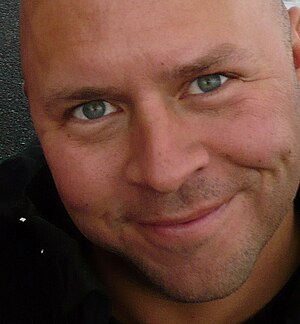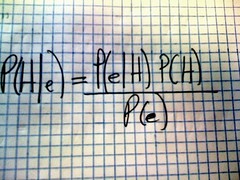But Nisbet is in the strange headspace of politics, where science is just a piece of furniture on the landscape of politics. What's more, it's a black box which emits certain very simple results. And when he describes the box, he gets it hopelessly wrong, and uses the bizarre and broken frames of the worst elements of the press.
The problem isn't the concept of framing. The problem is that the guy who has done the best job of staking out 'framing' as his personal territory has about the most toxic set of frames out there for our issues. There is no getting rid of writing to your audience, but the word 'framing' itself isn't all that valuable. If it belongs to Nisbet I don't want it.
One thing I've learned recently is that while in many ways I behave like a journalist, I simply have almost no interest in 'news' any more than I am interested in 'sports'. Events in sports fall clearly into the space of 'don't matter'. In fifty years nobody will remember who won the superbowl this season. In politics, they will remember Obama's name, but little of what he said or did.
As long as we play on the battlefield of week-to-week politics and don't actually look into the science box, we lose the war of words. Yes, the right is disposed against us and the left toward us, pretty much for arbitrary cultural reasons. But the opposition is free to twist the facts and we aren't. So they pick off people as they start to pay attention and the mythology of massive corruption in climate science gets further elaborated.
If we don't play the long game, if we don't try to revive critical thinking and evidence-based reasoning, if we don't go beyond assertion and into explanation, we are playing on the opposition's turf.
Nisbet may have done a good job of describing the opposition's turf, but that is all he knows. He, specifically, is an example of a person lacking a scientific education remotely commensurate with his capacities and interests. His approach embodies the substitution of politics for knowledge.
The long game is our home turf, and we have to stop listening to people who miss that point completely. The absurdly short time scales and shallow symbolic allegiances and frantic half-crazed yuppie obsessions du jour of the beltway and the press are the problem, not the solution.
My comment to the post:
I am slack-jawed. You summed up Nisbet perfectly. You communicated better than I could have, exactly how Nisbet rubs me the wrong way. I am compelled to go into detail about how good a job you did.
> Yes, the right is disposed against us and the left toward us, pretty much for arbitrary cultural reasons.
A good thing to remember. Once the costs of excess atmospheric carbon dioxide reaches the trillions (with human cultures displaced from drought and flooding, loss of food and wood production from climate change, and loss of ocean protein and nutrition from acidification), the left cannot be counted on to spend scarce resources effectively, because of the need to reward loyal voting blocks. (Not claiming the right will be any better.)
> Nisbet may have done a good job of describing the opposition's turf, but that is all he knows. He, specifically, is an example of a person lacking a scientific education remotely commensurate with his capacities and interests. His approach embodies the substitution of politics for knowledge.
So cruel, and so true.


![Reblog this post [with Zemanta]](http://img.zemanta.com/reblog_e.png?x-id=a54827e7-1dfe-4702-a010-01232c8c1cf9)



![Reblog this post [with Zemanta]](http://img.zemanta.com/reblog_e.png?x-id=e55e7dad-466b-47d6-83f1-a0546e3fd412)



![Reblog this post [with Zemanta]](http://img.zemanta.com/reblog_e.png?x-id=ee46b6bc-6e44-4e2b-a802-e7a9ab39edb6)



![Reblog this post [with Zemanta]](http://img.zemanta.com/reblog_e.png?x-id=caed34b7-8c61-46e1-97d1-bed7fb193d0e)


![Reblog this post [with Zemanta]](http://img.zemanta.com/reblog_e.png?x-id=614deccb-8524-4d84-b677-f1c507425e3e)



![Reblog this post [with Zemanta]](http://img.zemanta.com/reblog_e.png?x-id=7d2eae6c-e832-48c3-a195-bc9c784f14eb)


![Reblog this post [with Zemanta]](http://img.zemanta.com/reblog_e.png?x-id=1d3fcc2d-696d-40d1-9a4a-e365338dec0b)


![Reblog this post [with Zemanta]](http://img.zemanta.com/reblog_e.png?x-id=17c71409-59a4-41c5-8894-fdf6cea04334)






![Reblog this post [with Zemanta]](http://img.zemanta.com/reblog_e.png?x-id=0d783c5b-6904-44ea-b7d4-b91fe30d858b)